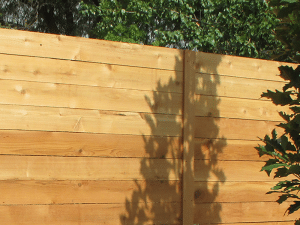Choosing the right fence for your home can be overwhelming. Vinyl and Wood are two popular options, and understanding the cost differences can save time and money. At Logan Fence Company, we’re here to guide you through the decision-making process. This blog will explore the cost analysis of vinyl versus wood fencing, providing the insights you need.
Contents
Understanding Initial Costs
When considering a new fence, initial costs are often the first factor homeowners ponder. Vinyl fences, though typically more expensive upfront, offer durability that justifies the initial investment. On the other hand, traditional wood fences require a smaller starting budget, making them accessible for many.
Vinyl’s high initial cost comes from its manufacturing process. The material is crafted to withstand harsh weather and environmental stress. Wood fences, however, are more affordable to produce, leading to lower initial pricing. This difference in starting expenses sets the stage for the long-term cost comparison.
Both fence types have perks and drawbacks, impacting your wallet differently over time. From installation to maintenance, understanding these costs helps make an informed decision. Let’s break it down further to see how they stack up.
Installation Expenses
Installation is a critical component of any fencing project. With professional installation by Logan Fence Company, you can ensure quality and accuracy in the setup.
Vinyl fences often cost more to install due to their complexity. Precision in fitting is paramount to avoid gaps or misalignments that could compromise the structure’s integrity. Our experienced team ensures that every piece fits perfectly.
Wood fences, while generally easier to install, require attention to detail as well. Each post and panel must be sturdy and straight, a task well within our expertise. Our team handles all aspects of fencing, delivering results that last.
Longevity and Durability
Fencing is a long-term investment, and durability is key to getting your money’s worth. Vinyl stands out with its impressive resilience against elements like rain, wind, and UV rays. Unlike its wooden counterpart, it resists warping and insect damage.
Wood, though prone to weathering, offers a classic and beautiful aesthetic. Regular maintenance can help extend its lifespan, but nature can take its toll over the years. Decay, termites, and moisture make it less durable compared to vinyl.
Ultimately, longevity might play a pivotal role in your decision. A longer-lasting fence could mean fewer worries and savings on repairs.
Maintenance Requirements
Vinyl minimal maintenance is one of its standout features. A splash of soapy water now and then keeps it looking pristine. Wood regular upkeep, in contrast, involves painting, staining, or sealing every few years to maintain its appearance and strength. Vinyl cleaning is straightforward, often requiring just a hose and mild cleanser. Wood repair needs might include replacing warped or cracked boards over time. Vinyl pest resistance eliminates concerns like termites, a common issue for wood.
Environmental Impact
A thoughtful homeowner considers the environmental impact of their choices. Vinyl is a synthetic material, raising concerns about its ecological footprint. However, its longevity often balances this out, as fewer replacements mean less waste.
Wood is a renewable resource, making it a more eco-friendly option. But the need for chemical treatments can detract from this benefit. Sustainable practices, such as using reclaimed wood, can mitigate environmental concerns.
Both options have pros and cons regarding sustainability. The decision ultimately hinges on what aligns best with your values and priorities.
Customization Options
The aesthetic appeal is crucial in choosing fencing material, and both vinyl and wood offer unique advantages. Vinyl provides a crisp, modern look with various colors and styles to choose from. Homeowners can select designs that match their home’s architecture and personal taste.
Wood offers unparalleled natural beauty and versatility. It can be painted or stained to suit any desired appearance, from rustic to elegant. There’s a warmth to wood that captures attention and admiration.
Our experts at Logan Fence Company are ready to help you explore the possibilities and bring your vision to life.
Weather Resistance
Vinyl is well-known for its ability to withstand the elements, from harsh sunlight to extreme cold. Its durability in variable climates makes it an appealing choice for those seeking minimal weather-related concerns.
Wood can be more susceptible to weather damage, requiring protective treatments to resist moisture and sun exposure. Cracking, splitting, and discoloration might occur if neglected.
Both options demand consideration of local weather patterns. Choosing wisely ensures your fence stands tall and proud, regardless of nature’s whims.
Resale Value Impact
A well-constructed and attractive fence can significantly boost a property’s curb appeal and resale value. Vinyl’s sleek appearance and low maintenance are attractive to potential buyers who prioritize modern conveniences.
Wood’s timeless charm and nurtured beauty appeal to those seeking traditional aesthetics. With proper care, its elegance remains a strong selling point.
Both materials add value, but understanding the preferences of your local market can guide your decision if resale is a consideration.
Lifetime Cost Comparison
While vinyl may have higher upfront costs, its long-term investment may prove more economical due to minimal maintenance and longer lifespan. Conversely, wood might demand more frequent attention and expenses over the years.
Calculate the comprehensive lifetime costs by considering not just the purchase price but care, repair, and eventual replacement expenses. Understanding the full financial picture helps align the decision with financial goals and expectations.
Conclusion
Choosing between vinyl and wood fencing requires weighing various factors. For expert guidance tailored to your needs, contact us at Logan Fence Company by phone # 435-383-5152 or Request a Free Quote.




